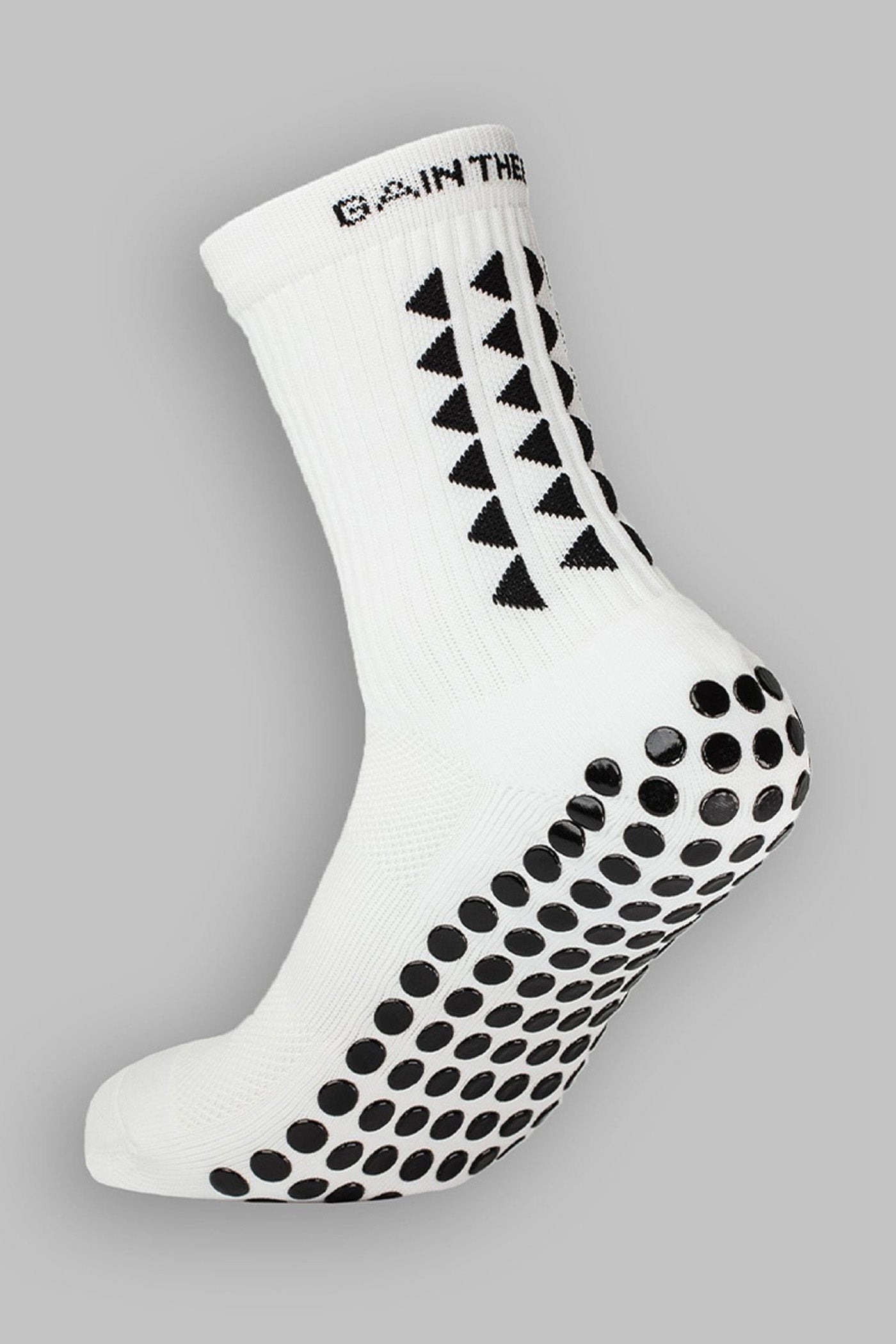Compression socks are a popular accessory among athletes and active individuals to help improve blood circulation and reduce muscle soreness, fatigue, and cramping.
While there is no debate about the benefits of compression socks, some research shows that when you wear them incorrectly, they can cause more harm than good.
They are designed to be worn for long periods, usually during the day. But, the length of time you wear them depends on what your compression socks are used for.
Read on to find out how long to wear compression socks.
What this article covers:
How Long Should You Wear Compression Socks for?
Unless you have a condition where compression socks are contraindicated, you can wear them throughout the day. To determine how long you should wear compression socks, you must consider the purpose of using them.
Suppose you wear them for medical reasons, such as lymphedema or deep vein thrombosis. In that case, you will get compression socks on prescription. Your healthcare provider will explain the ideal amount of time to wear the socks to treat your symptoms and the compression socks levels you must wear.
Compression socks or sleeves are also popular among athletes who want to help skeletal muscle pump during training and alleviate delayed-onset muscle soreness.
The main benefit of compression socks for athletes is a reduction in muscle fatigue during exercise and a faster recovery in the days following an event. Wearing compression socks can decrease post-exercise muscle pain and improve flexibility.
You should wear compression socks for at least six hours post-intense activity for optimal benefit. In the event of long-distance activity, you should wear compression socks for 6-12 hours a day for a couple of consecutive days.
If you are an athlete serious about your performance and improving your recovery time, our highly-rated compression socks are ideal. And if it’s speed and stability you want, our top-selling grippy socks such as these purple socks with grips will give you the boost you need.
We recommend that you wear compression socks for eight to twelve hours a day if you are on your feet or sitting most of the day. However, the amount of time you wear compression socks will vary depending on your needs and overall health.
Research suggests that wearing compression socks during travel across time zones can increase recovery time from jet lag by fifty percent.
Wearing compression socks for the duration of your trip leads to increased oxygen in your muscles and improved muscle repair from confined spaces and limited body movements.
While the general recommendation is to wear compression socks for up to twelve hours at a time, some trips last fifteen hours or more. Wear your socks for the entire duration of your trip and remove them when you arrive at your destination.
Can You Keep Compression Socks on All the Time?
You may wonder if it is safe to wear compression socks all day.
Compression socks can be worn for extended periods. Still, we don’t recommend wearing them for 24 hours a day.
Compression socks are generally safe to wear when used correctly, but you must give your skin a break from the compression and allow your skin to breathe.
Wearing compression socks for too long can cause decreased circulation and sensation in your feet.
If you have questions about how long you should wear compression socks, it’s best to consult your doctor. They will recommend a schedule appropriate for your specific needs and health condition.
So should you wear compression socks to bed?
Compression socks should not be used when you sleep. But, there may be exceptions for medical reasons, such as people on bed rest or with limited movement.
Compression socks can roll down while you are asleep and restrict your circulation. Plus, wearing compression socks when lying down does not have the same benefits as during the day.
In a reclining position, your veins do not need compression to assist the blood flow against gravity.
When to Take off Compression Socks
Compression socks are designed to improve circulation, not to restrict it. Wearing compression socks that are too tight, at the wrong compression level, or not fitted correctly can interfere with blood flow in your legs.
There are several compression socks sizes. It is crucial to choose the right size and compression level for your needs. If you experience discomfort, tingling, or numbness while wearing compression socks, you should take them off and consult your healthcare provider for advice.
Compression socks can sometimes cause chafing on the legs. People with dry or fragile skin may experience skin irritation, redness, bruising, or even painful skin breakages. If compression socks fit correctly, this is less likely to happen.
Compression socks can cause skin sensitivity in some people. Materials used in the socks, such as nylon, spandex, or latex, can cause a skin reaction in people who are sensitive to these materials.
Tightness is another reason for skin irritation, and so is the incorrect length of the sock. Socks that are the wrong size can cause friction resulting in skin irritation.
If the socks are too warm and cause perspiration on the legs, it can lead to skin irritation. Choosing compression socks that are the right size and made of materials suitable for your skin is crucial.
If you experience skin irritation, you should take off the compression socks and consult a doctor.
How Often to Wear Compression Socks
How often you wear compression socks can vary depending on the individual and the reason for wearing them.
Typically, the recommendation is to wear compression socks for eight to twelve hours a day, especially during activities that strain your legs. For example, during endurance sports, traveling, or sitting or standing for long periods.
If you have a medical condition such as varicose veins or deep vein thrombosis (DVT) or if you have had surgery, you must follow your doctor's guidance.
Conclusion
If you sit or stand for long periods, are recovering from an injury, or are an athlete, then you might find compression socks useful. But, there are limits on how long you should wear compression socks.
Even the best foot compression socks should not be worn around the clock unless you’ve been instructed by your health provider to do so.
While wearing compression socks for extended periods can be beneficial, removing them to wash and give your skin time to breathe, will help prevent skin irritation and allergy.
Did our blog meet your needs? You might also find our other guides helpful:
- How to Put on a Compression Sock
- How Long Does It Take for Compression Socks to Work?
- Wearing Compression Socks Too long
- Easy to Put on Compression Socks for Elderly
- How Tight Should Compression Socks Be
- What Are Ankle Socks
- How to Wear Grip Socks
- What Is Crew Socks
- What Do Grip Socks Do
- Socks as Gifts
- Best Sock Material
- Best Walking Socks
- Best Walking Socks (Women's)
- Running Socks: Women
- Compression Socks for Runners
















